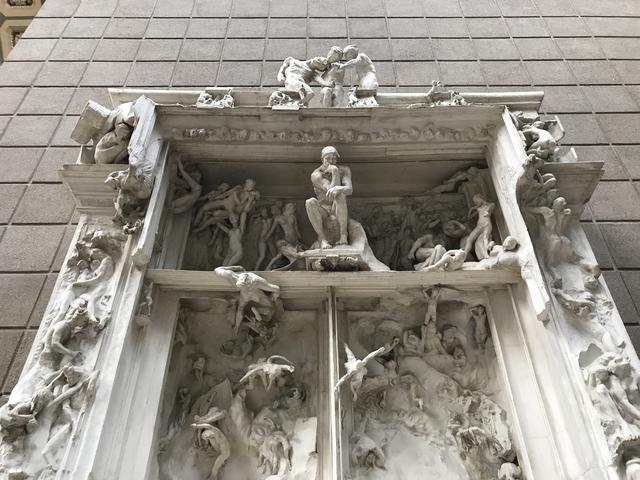Door to hell

The "Door to Hell" by Auguste Rodin is a monumental sculpture that holds a fascinating history within the world of art. Commissioned by the French State in 1880 to adorn the entrance of the Museum of Decorative Arts in Paris, this masterpiece was intended to feature eleven bas-reliefs depicting scenes from Dante's Divine Comedy. Inspired by the renowned doors created by Ghiberti for the Baptistery of Florence in the 15th century, Rodin embarked on a creative journey that would ultimately lead to the creation of some of his most iconic works.
Despite completing a first version of the door in 1883, the museum project was abandoned, leaving the "Door to Hell" without a designated home. However, this setback did not deter Rodin's artistic vision. Instead, the door became a wellspring of inspiration for the artist, giving rise to sculptures such as "The Thinker" and "The Kiss." The Gate of Hell, as it came to be known, symbolized Rodin's boundless creativity and his struggle to achieve a definitive outcome, a theme that resonated throughout his career.
The composition of the Gate of Hell is a tour de force of symbolism and emotion. At the top of the door, the group of three Shadows, each with an amputated arm, conveys a sense of despair and anguish. In the center, the figure of The Thinker, representing Dante himself, contemplates the abyss below. To the right, Ugolin is depicted in a moment of agony, while on the left, Paolo and Francesca are entwined in a tragic embrace. The entire scene emerges from a sea of boiling lava, with contorted figures and expressive poses that evoke a sense of turmoil and damnation.
Rodin's use of high relief in the Gate of Hell allows for a dynamic interplay of light and shadow, enhancing the dramatic intensity of the composition. The human body takes center stage, its forms twisting and contorting in a frenzy of emotion. The architectural elements of the door are almost secondary to the expressive power of the figures, blurring the lines between sculpture and architecture. The plaster version of the Gate of Hell, housed in the Orsay Museum since 1917, stands as a testament to Rodin's artistic vision and his ability to capture the complexities of the human experience in a single work of art.
In conclusion, the "Door to Hell" is not just a sculpture but a profound exploration of the human condition, a visual representation of Dante's inferno brought to life by Rodin's unparalleled talent. As visitors stand before this monumental work, they are invited to contemplate the depths of despair and the heights of creativity that coexist within the human soul. The Gate of Hell may have never fulfilled its original purpose as an entrance to a museum, but it has found its rightful place as a timeless masterpiece that continues to captivate and inspire audiences around the world.
© ChatGPT 3.5